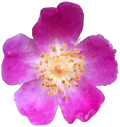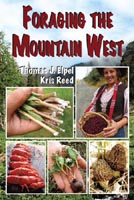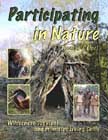| Thomas J. Elpel's Web World Portal  Wildflowers & Weeds 
|  Wildflowers-and-Weeds.com Plant Identification, Edible Plants, Weed Ecology, Mushrooms, and more. Home | Plant Identification | Plant Families Gallery | Edible Plants | Mushrooms | Links Desertification & Weed Ecology | Weed Profiles | E-Mail | Search this Site |
|
Moraceae Have you ever seen a tree with milky sap? If so, you have likely met a member of the Mulberry family. These trees and shrubs have alternate leaves and milky latex sap. The unisexual flowers are small and usually tightly clustered, with male and female flowers appearing on the same or different trees. Male flowers have 4 (sometimes 0) sepals, 0 petals and 4 stamens. Female flowers have 4 (sometimes 0) sepals and 0 petals. The ovary is positioned superior or inferior and consists of usually 2 (rarely 3) united carpels, as indicated by the same number of styles. One carpel is usually aborted, forming a single chamber. In species with tightly clustered flowers, the fruits merge together as a single mass, creating a false fruit known as an "aggregate" or "multiple." Key Words: Trees and shrubs with alternate leaves and milky sap.. Please e-mail Thomas J. Elpel to report mistakes or to inquire about purchasing high resolution photos of these plants.
There are more
Return to the Plant Families Index |
|
Looking for life-changing resources? Check out these books by Thomas J. Elpel:
|
|
|









